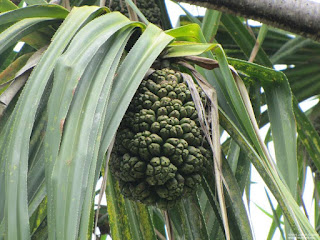 |
| Falcon50 approaching the Palmyra Atoll runway |
While the flight that brought us to Palmyra was configured to hold a lot of cargo inside the plane's cabin, our return flight was configured to maximize the number of passengers it could accommodate. We were bringing back a 90 lb cooler filled with all the tiles that we retrieved after being on the reef for 3 years. We had two additional coolers weighing just under 50 lbs each that held two microscopes and lots of other gear. Then there was Tim's very large dive bag, both our carry-on bags, and the 37 in camera stand upright. There were only three of us flying back on a plane, so all our baggage fit in the plane's hold.
After moving the basket, I was able to stretch out on the 3 seat bench shown below and catch up on my sleep.
 |
| The three seats on the left form a bed for me to catch up on my sleep. |
Tim, who was even more sleep deprived than I was, is able to recline his seat more than one can on any commercial airline when flying in coach.
 |
| Tim getting ready to get some shut-eye |
A view of cockpit as our pilot George and co-pilot Jonathan prepare the plane for takeoff.
 |
| cockpit of the Falcon50 |
One last view of the reef as the plane leaves the runway.
 |
| the reef off the north shore of Cooper Island on takeoff |















































